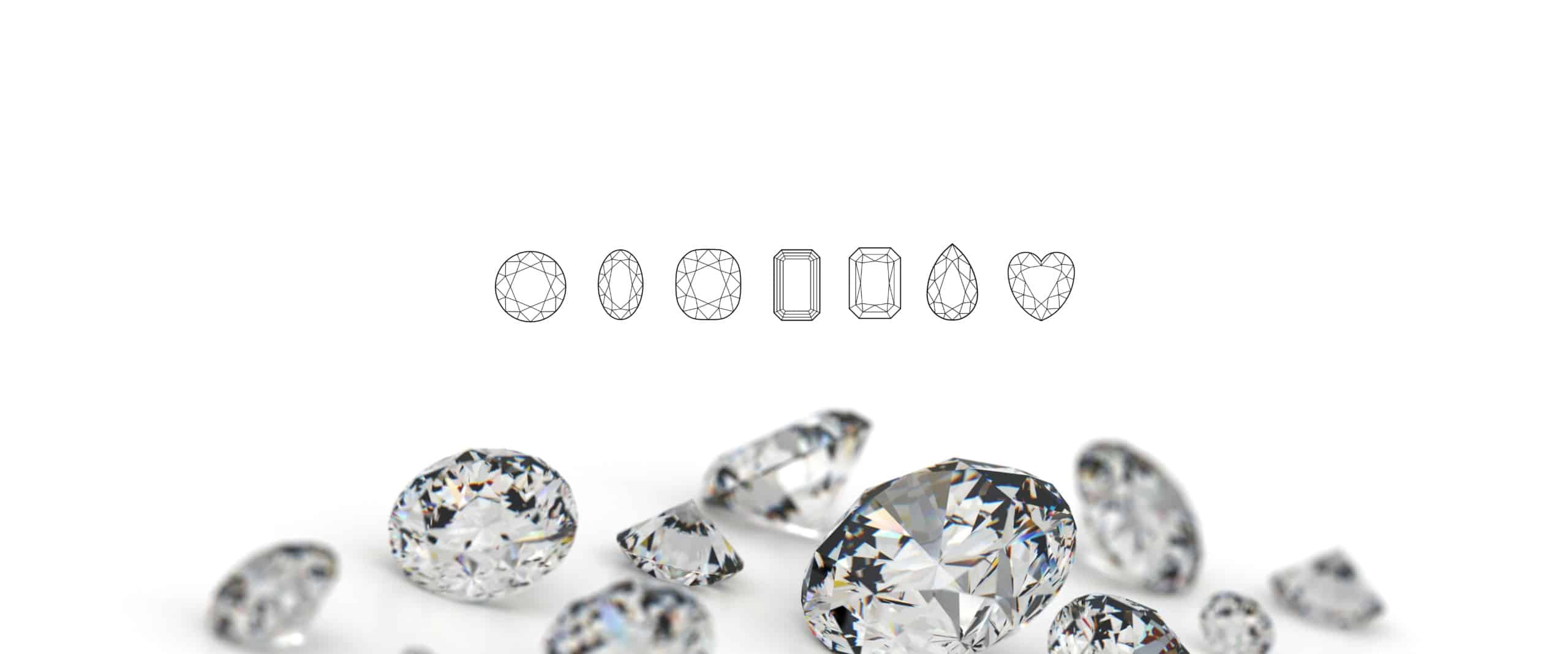
Rings with precious stones – be it a wedding ring or an engagement ring with diamonds – have been in great demand for centuries. A wedding ring in gold with diamonds is the most popular combination. On the way to the perfect ring, there are a number of questions that arise time and again:
- What is the difference between a diamond and a brilliant-cut diamond?
- Should it be one stone or several?
- What ways are there to hold a gem in a piece of jewelry?
- Can I add more stones later, how are they set?
- What do the 5Cs mean?
- How are gemstones set?
- Which gemstone qualities are available from amodoro?
Here we give you an overview of the options available for choosing the right gemstones for you and thus making your own wedding rings with diamonds into an unmistakable one-off piece.
What is the difference between a diamond and a brilliant-cut diamond?
A diamond is the most treasured gemstone. By nature a diamond is uneven and matt, only when it is cut does it sparkle in its special shape. The brilliant cut with its 57 facets is the best known and by far the most popular cut of the diamond. The designation brilliant is only permitted for diamonds. There are many other gemstones such as sapphires or synthetic stones such as zirconia that can be cut as diamonds, but these must always use their mineral name. The square princess, baguette or heart cut are available as further cut types, each of which is available in many different sizes.
Should it be one stone or several?
When choosing how many stones there will be, the decisive factor is which type of ring, which type of barrel it is and how wide and how high your ring should be. We offer various ring profiles that you can adjust according to your ring size. There are different ways in which the stones are set, this is a matter of taste. You can use our configurator to get a good overview of which stones can be set and how. If you have got an overview, we recommend consulting a wedding ring expert in one of our amodoro partner branches in your area.
What ways are there to hold a gem in a piece of jewelry?
Traditionally there are different ways of adding precious stones to wedding rings or engagement rings. We offer you all common of these so-called “types of setting” and hereby give you an overview:
Types of setting
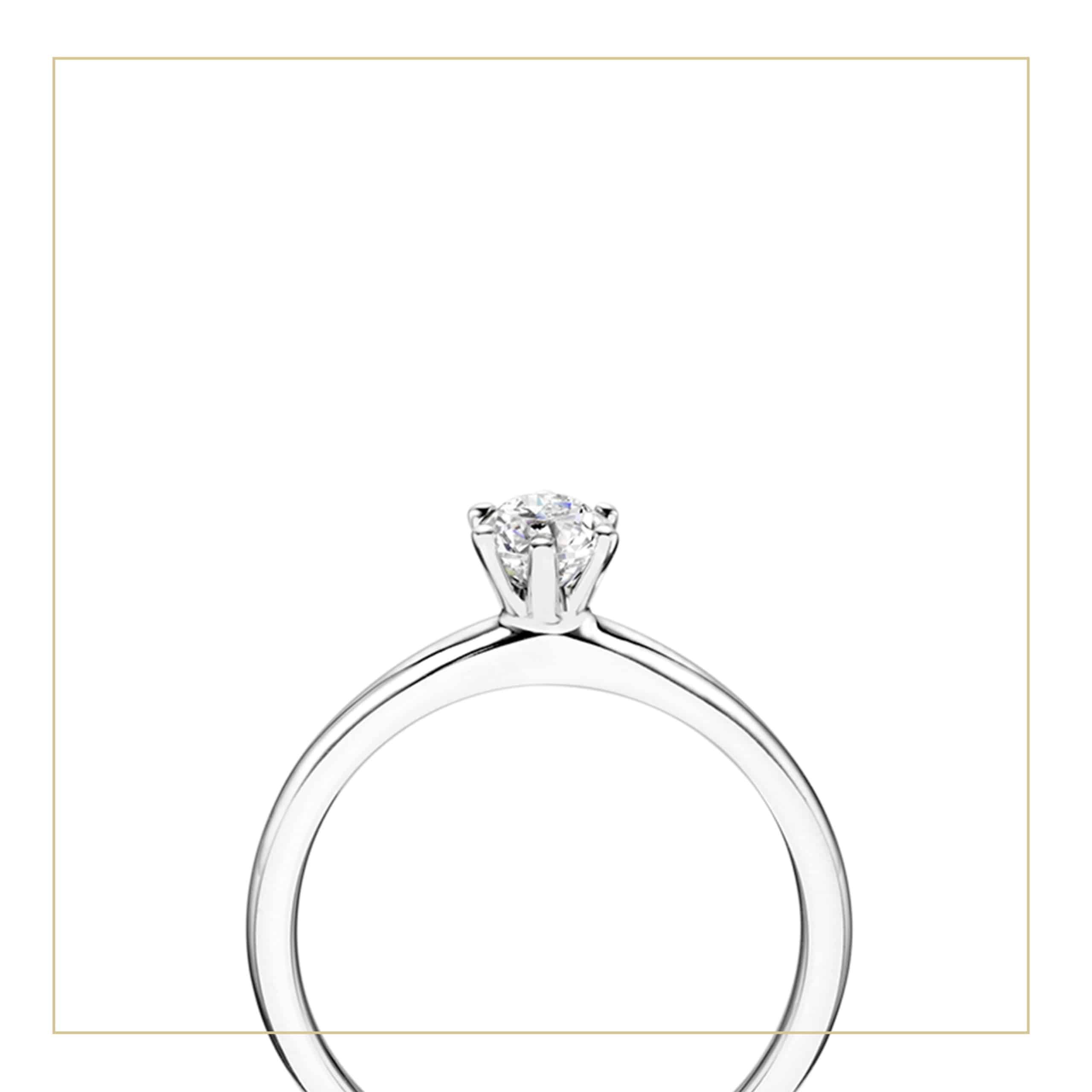
Prong setting
In this type of setting, also known as a chaton setting, the stone sits high on the ring. It is held on the ring by fine metal rods (prongs). In order to give the stone a good hold, the prongs are milled inwards at the upper edge and the remaining part of the prong is pressed over the stone and filed. This type of setting is often found in solitaire rings, which are very popular engagement rings.
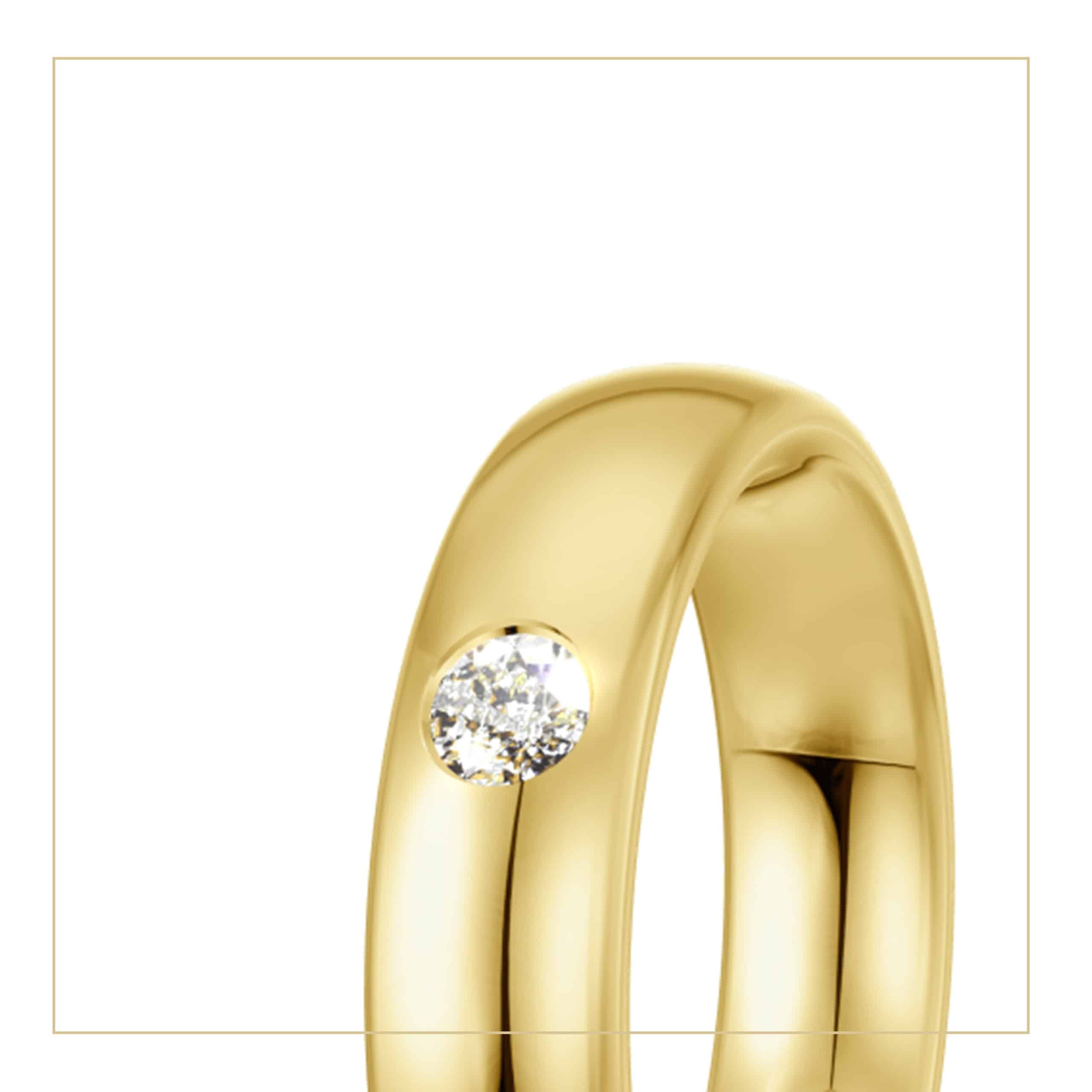
Rub in
During rubbing, the gemstone is set into the ring and is held in place by ‘rubbing’ the edge of the surrounding metal a little over the edge of the cut stone. This type of setting is particularly well suited for small stones and is very popular with wedding rings, as only a narrow precious metal edge covers the stone. In addition, this type of setting is very durable due to the “unity with the ring” and is therefore characterized by a particularly high suitability for everyday use.
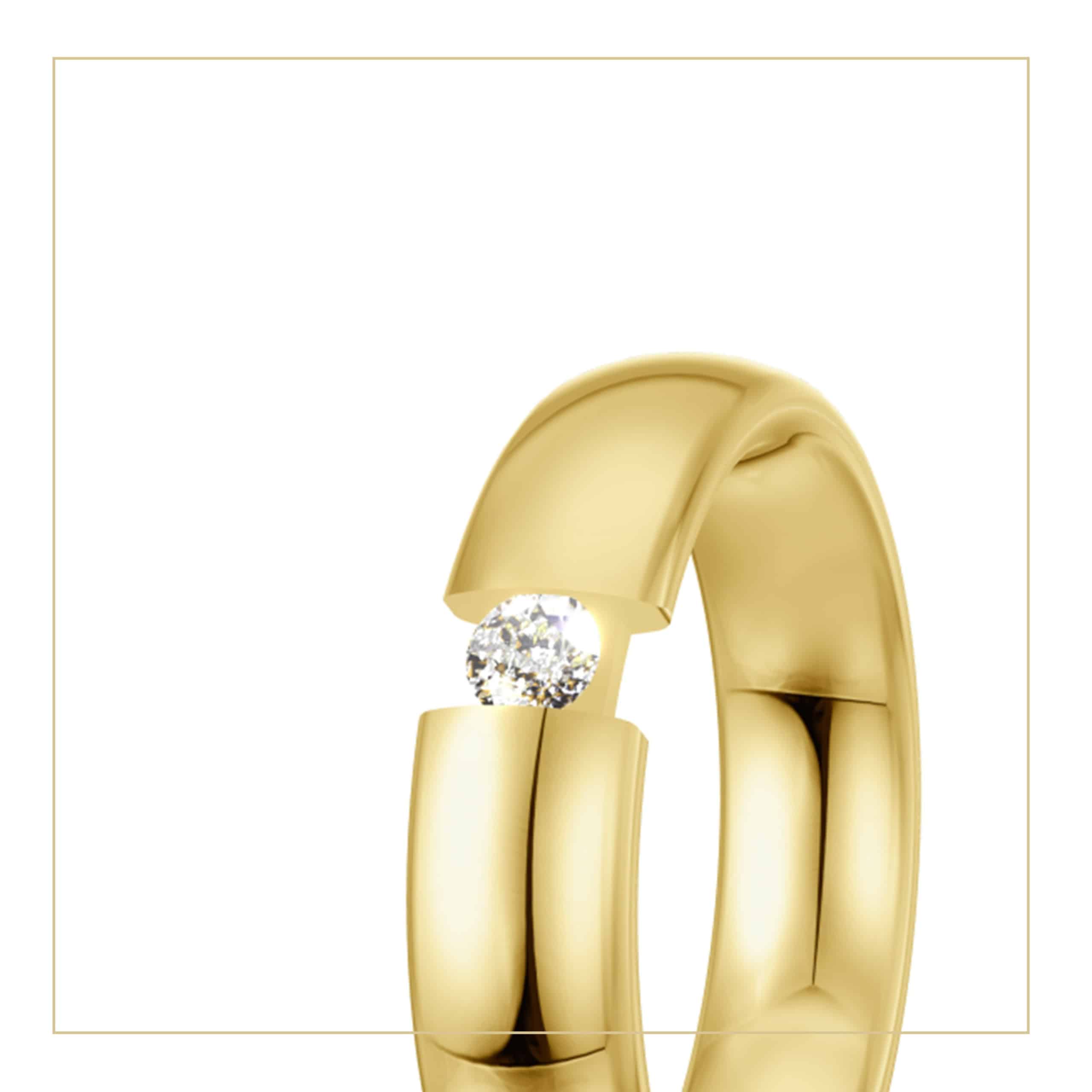
Clamping / clamping rings
As the name suggests, the gemstones are “clamped” in the ring when the setting is clamped. To do this, an area of the ring is cut out by our experts and the metal is compacted at this point to create a stone seat. This compression means that the stone is firmly seated in the ring.
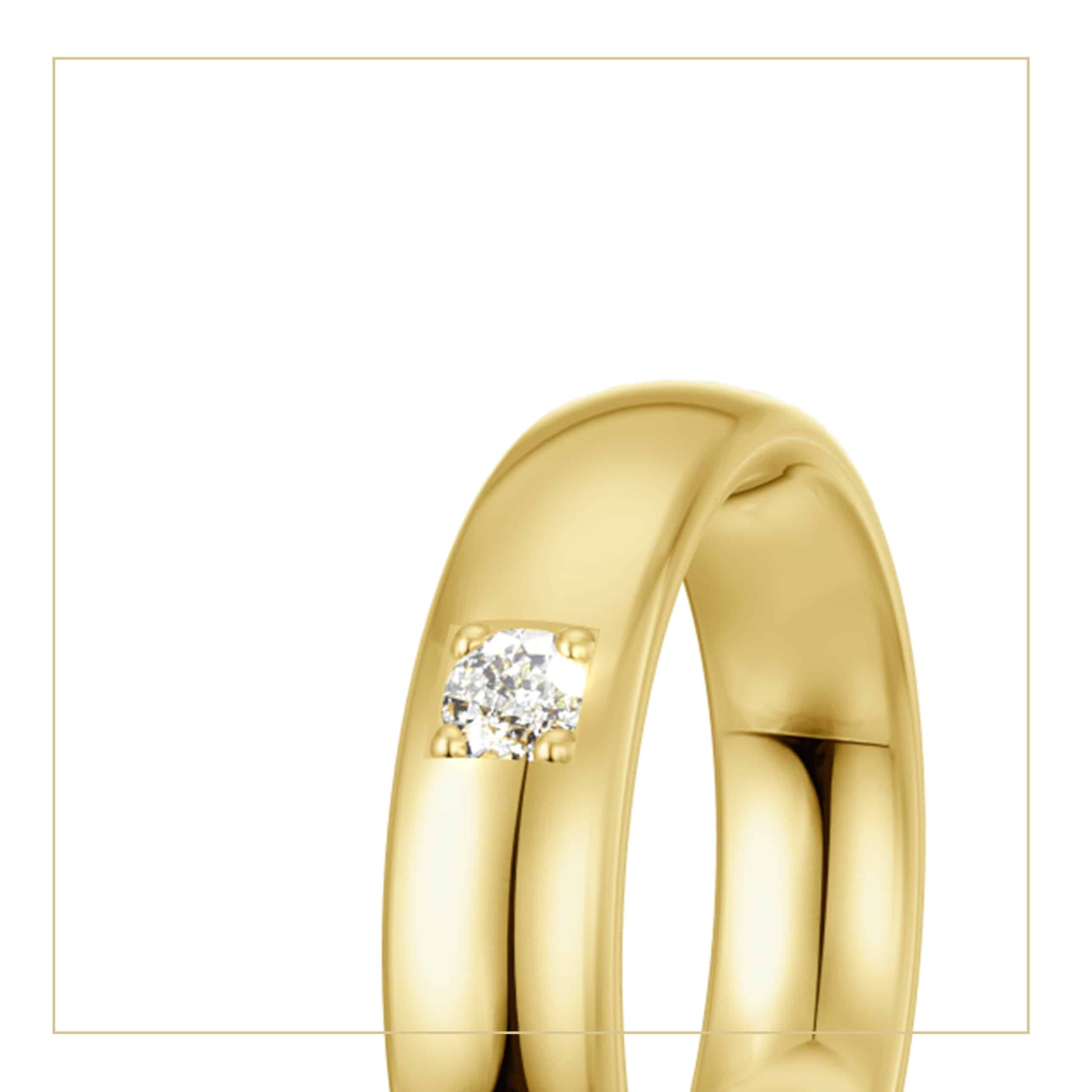
Pave
When setting in this type, the gemstone is inserted into a milled hole and the precious metal is compressed or reduced in size with a burin so that chips are produced, which reach over the stone and thus fix it. The gemstones can be set individually or in a row and this type of setting also achieves a high level of unity with the ring and thus good suitability for everyday use.
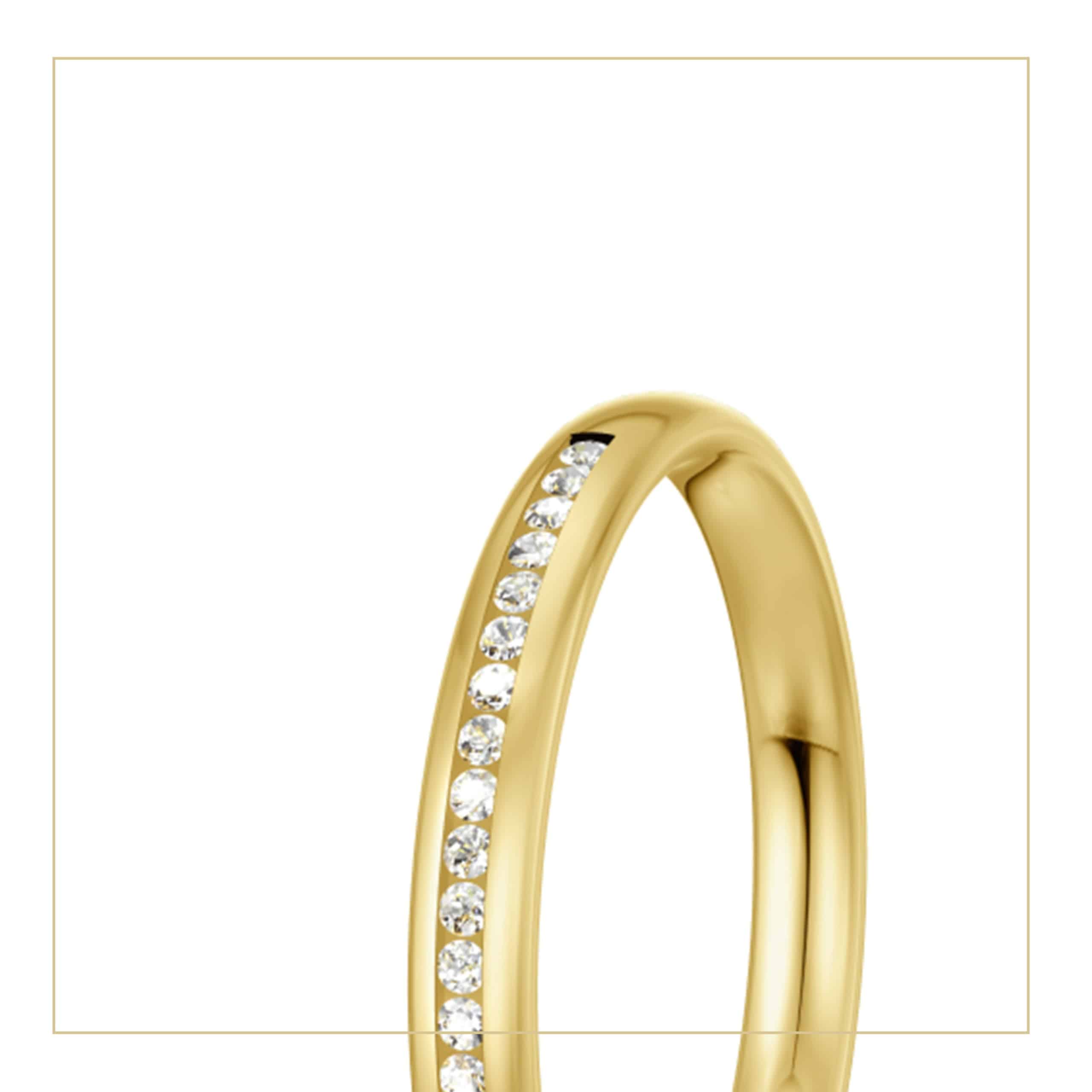
Channel setting
The gemstones are also clamped into the ring with the channel setting. For this purpose, with this type of setting in the stone seat, where the gemstones sit, the stone is compacted. The compression means that the gemstones are firmly set in the ring. With channel settings, one or more gemstones are placed in a row in a groove (channel) in the ring. Since the gemstones in this type of setting are virtually “floating”, the light is reflected with maximum brilliance. Due to the “channel”, this type of barrel also has a high durability and is therefore suitable for everyday use. For this reason, this type of setting is also very suitable for wedding rings.
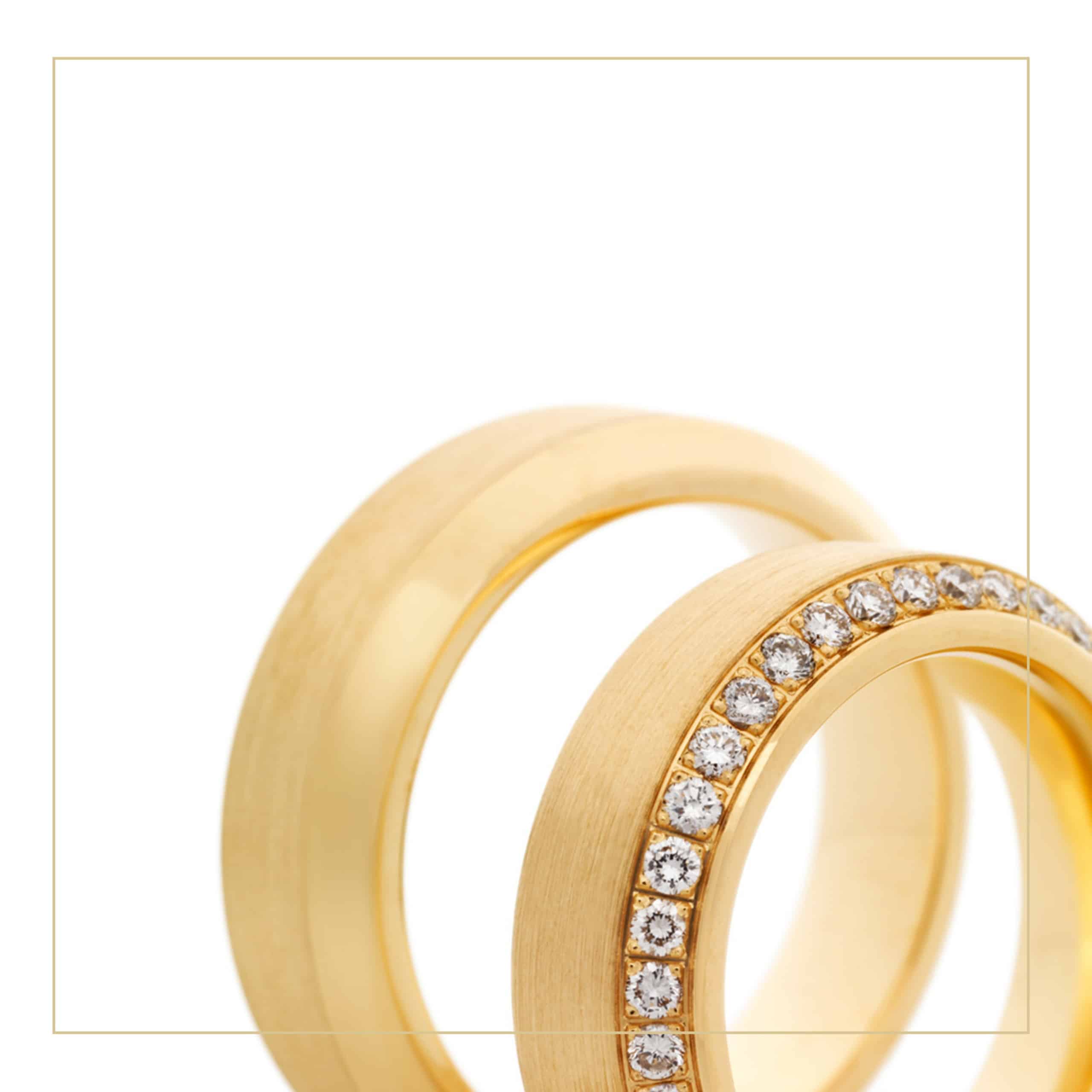
Other stone settings
In some ring profiles it is possible to set diamonds in the bevel (outer edge of the ring band) or to set diamonds according to individual customer requirements (e.g. as an “eye” / “river” or as a diagonal across the ring). Our amodoro partners will be happy to advise you. You can find a location near you here.
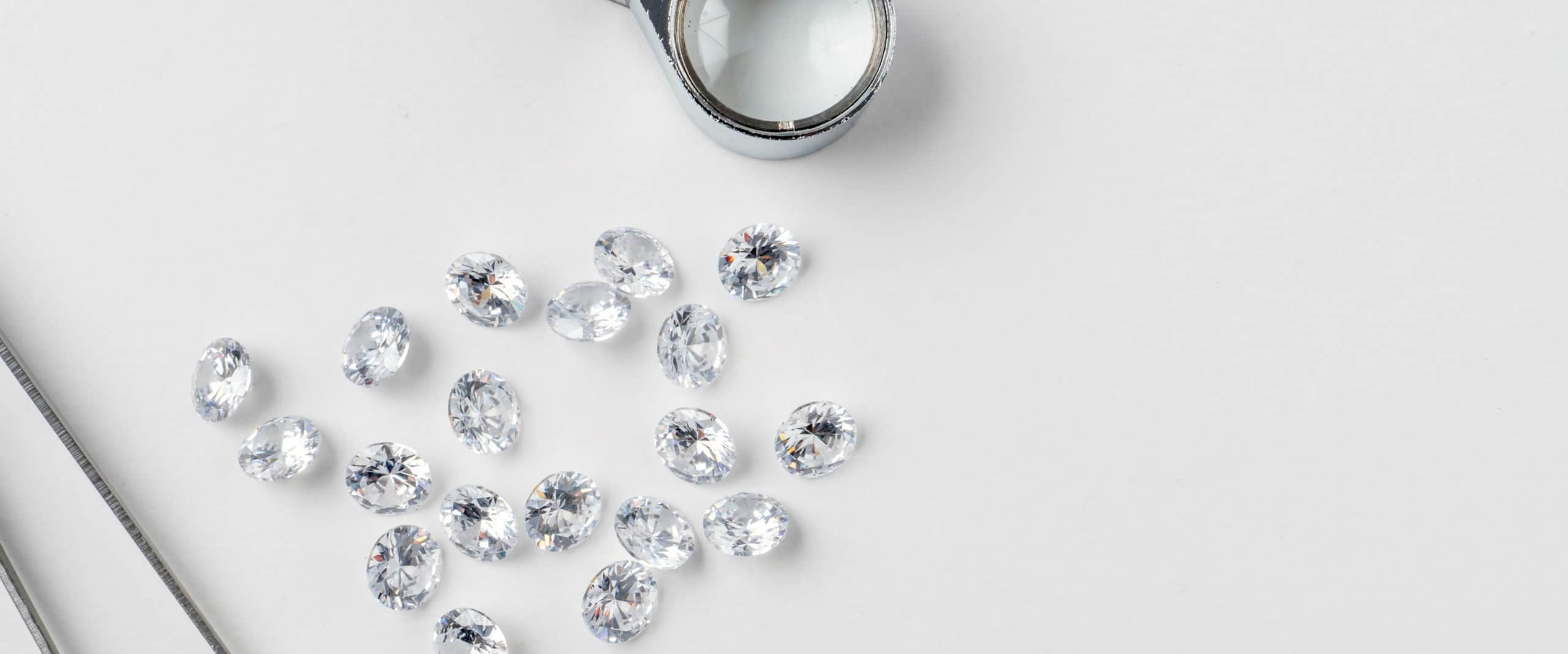
Can I add more stones later, how are they set?
Since our production partners work with calibrated gemstones, it is usually possible that further stones can be added later. This always depends on the type of setting selected and the ring profile, one of our amodoro partners in your area will be happy to help you!
What do the 5 C`s mean?
The quality criteria of diamonds are referred to as the 5 Cs: These mean carat, color, clarity, cut and conflict.
Carat
Carat describes the weight and thus also the size of the gemstone. A carat is 0.2 grams, the abbreviation for carat is ct. The origin of this unit of measurement goes back to the seeds of the carob tree, which were used as a unit of measurement due to their similar weight of approx. 0.2 g and their same size. Carat also describes how many parts of gold are present in a gold alloy. Read more about our gold alloys here.
Colour
In addition to size, color is also an important quality criterion for gemstones. The most valuable color is absolute colorlessness and crystal clear transparency, but this does not happen. Diamonds are divided into the following color categories:
- Very fine white (River)
- Fine white (Top Wesselton)
- White (Wesselton)
- Slightly tinted white (Top Crystal)
- Tinted white (Crystal)
- Tinted 1 (Top Cape)
At amodoro you get gemstones with a color of Wesselton (white) or better as standard.
Clarity
The value of the gemstone is also measured by its purity, its “clarity”. Gemstones can contain natural inclusions, which can be liquid, gaseous or solid. The purity is classified according to the following terms.
- if – internally flawless – flawless, possible surface marks from processing
- vs1 / vsi – very small inclusions – inclusions difficult to see when magnified ten times
- si1 / si – small inclusions – inclusions are easy to see at ten times the magnification.
All of the mentioned gemstone purities are available from amodoro.
Cut
It is only through its cut that a diamond gets its sparkle, also known as fire. The different types of cut make the diamond sparkle in different ways. You might know these types of cuts:
- Brilliant cut – 56 facets
- Princess cut – 44 facets
- Heart cut – 54 facets
- Victoria cut – 52 facets
- Navette / Marquise – 54 facets
- Pear-shaped cut – 55 facets
- Flanders cut – 60 facets
- Emerald cut – 48 facets
Conflict
The origin of the gemstones is one of the most important characteristics for amodoro. So-called “blood diamonds” come from conflict regions and are won under inhumane circumstances. You can only receive conflict-free diamonds from us, from clearly marked conflict-free indications of origin.
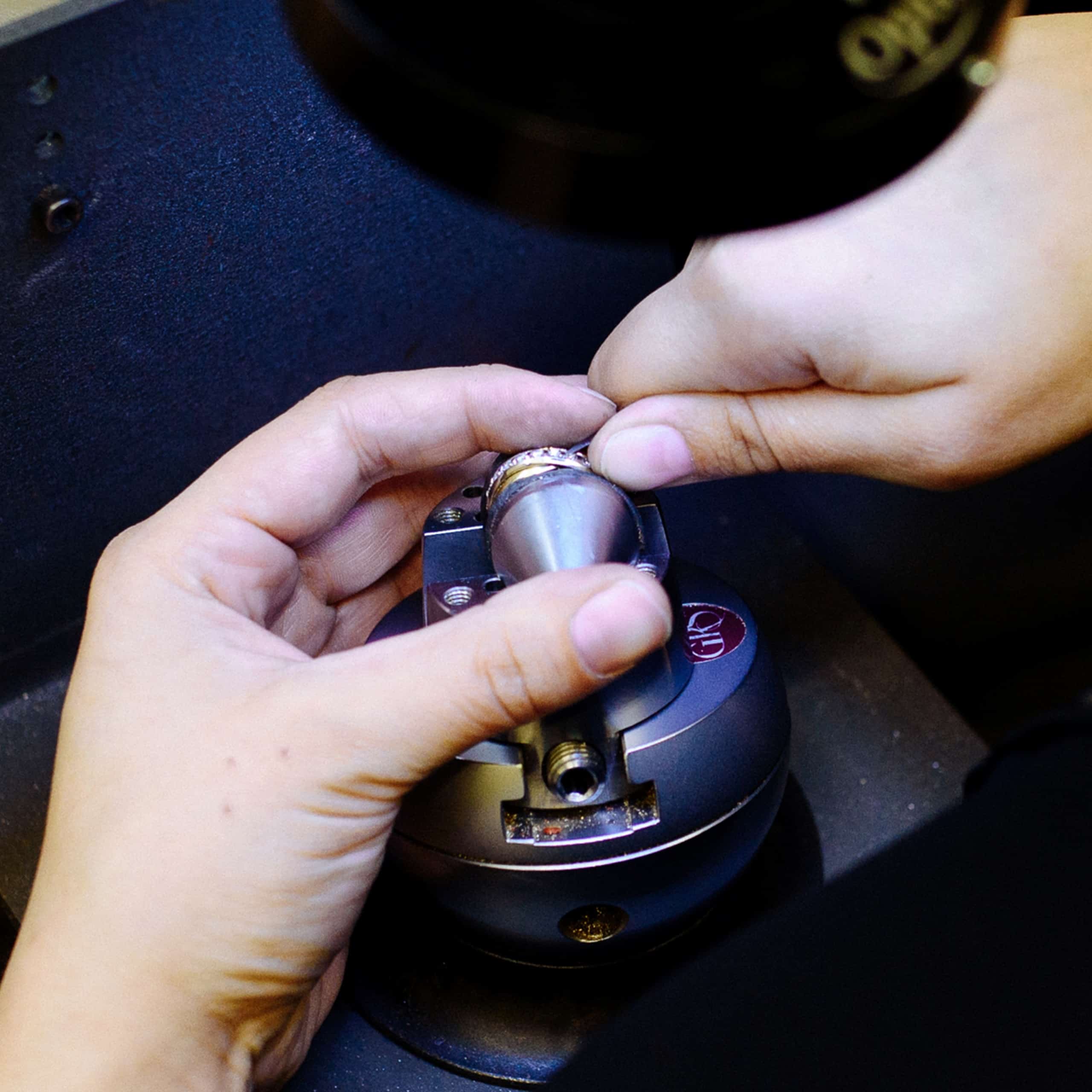
How are gems set?
Your ring will be lovingly processed by our very experienced gem setters. Together with our partners we can fulfill your individual customer wishes.
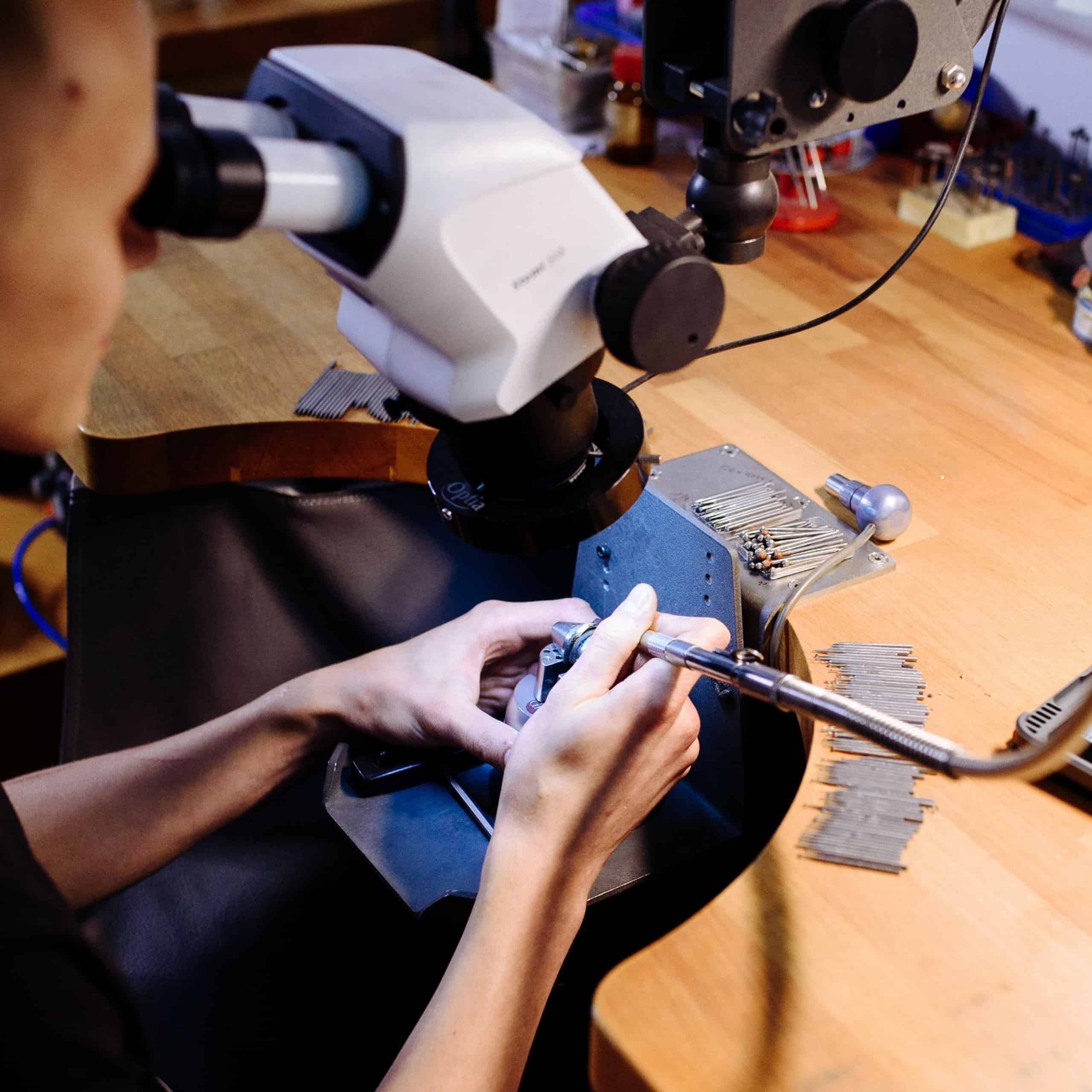
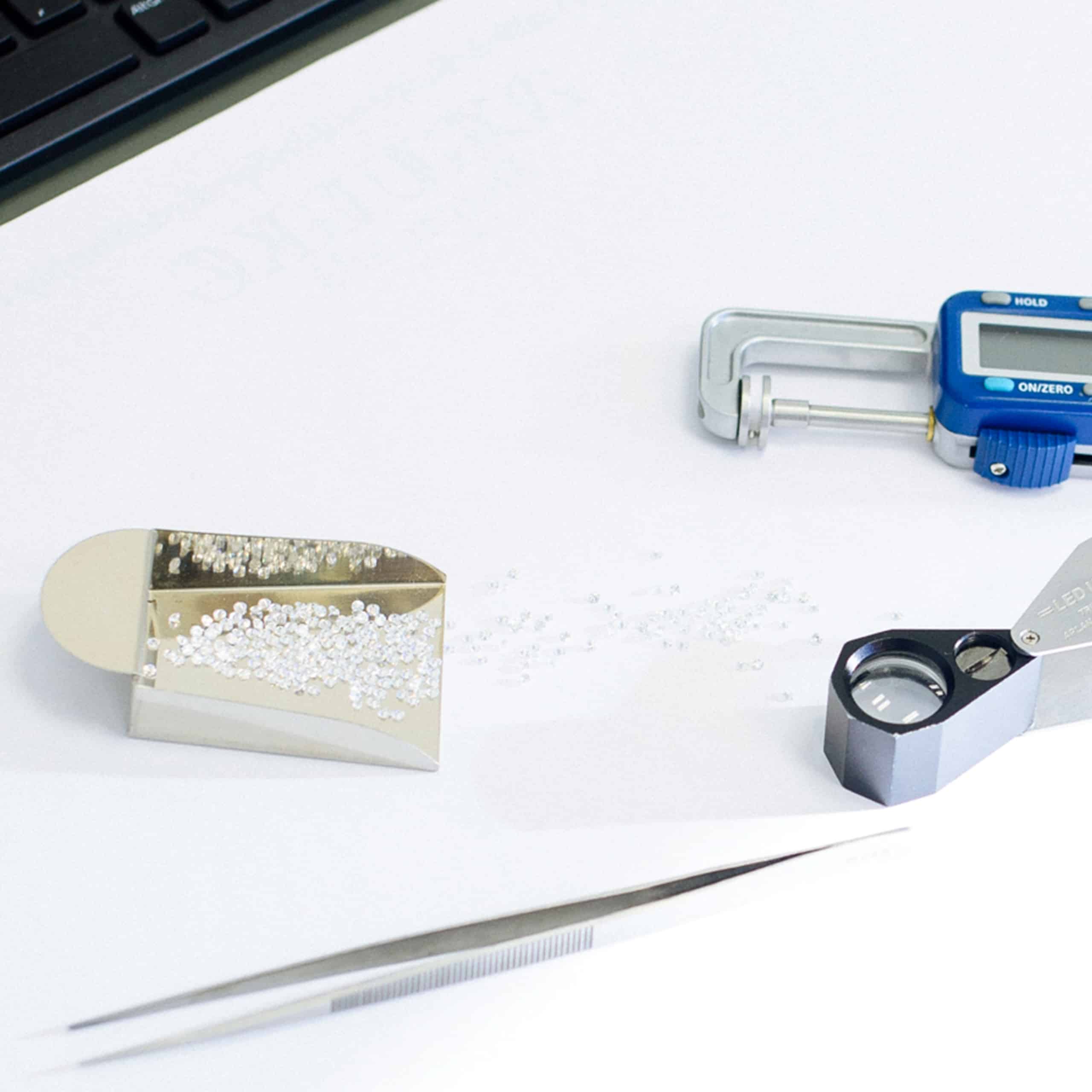
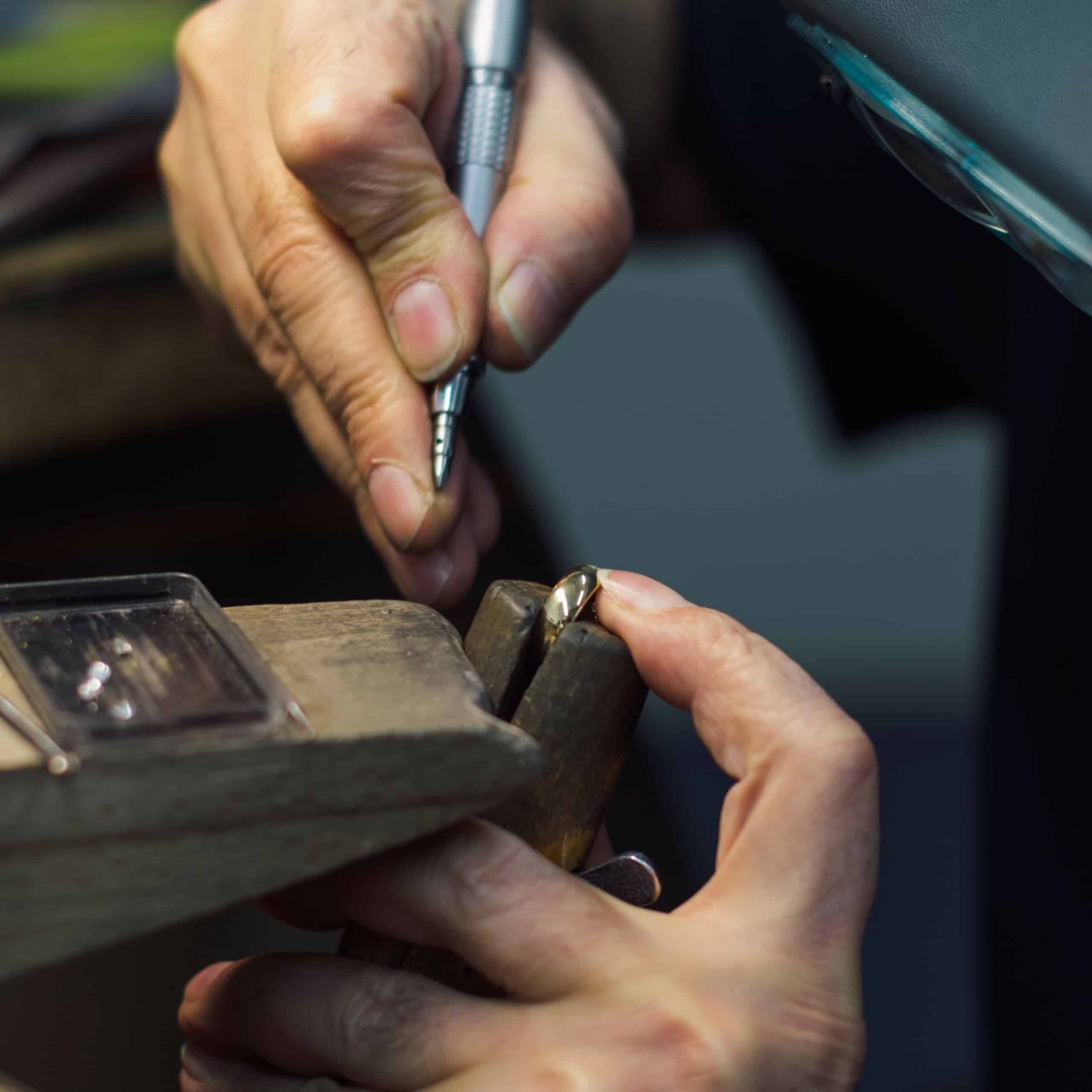
Which gemstone qualities are available from amodoro?
TW/if
Color: TW (Top Wesselton – fine white)
Clarity: if – internally flawless
TW/vsi
Color: TW (Top Wesselton – fine white)
Clarity: vs1 /vsi – very small inclusions
W/si
Color: W (Wesselton – white)
Clarity: si – small inclusions
The right choice – preferably with one of our experts
Which stone size and quality is best for which type of barrel and which profile can be an overwhelming decision. The effect of the proportions of the ring band and gemstone size to one another and also the individual effect on your hand are very diverse. We therefore always recommend taking the time and getting advice from experts on site.
Our Amodoro partners look forward to helping you! Here you can find a partner in your area.
